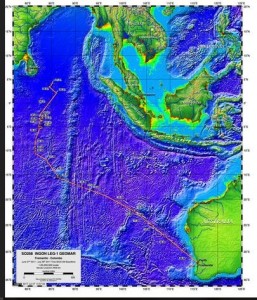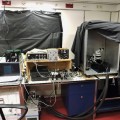NSU Newsroom
SharkBytes
Horizons
This version of NSU News has been archived as of February 28, 2019. To search through archived articles, visit nova.edu/search. To access the new version of NSU News, visit news.nova.edu.
This version of SharkBytes has been archived as of February 28, 2019. To search through archived articles, visit nova.edu/search. To access the new version of SharkBytes, visit sharkbytes.nova.edu.
Research Spotlight: Conducting Research in the Indian Ocean
 Halmos Faculty member Tamara Frank, Ph.D., recently returned from a 5 week research expedition in the Indian Ocean, on the German Research Vessel Sonne. Onboard was an international mix of 32 geologists and biologists from Germany, the United Kingdom, Australia, Russia and the US (Frank was the only American onboard), as well as two videographers from the BBC. Leaving from Fremantle, Australia, the 36 day expedition involved trawling with the RMT25 trawl net (biologists) and dredging along outcrops of the Afanasy Nikitin Seamount and Ridge to depths of 6000 m (geologists).
Halmos Faculty member Tamara Frank, Ph.D., recently returned from a 5 week research expedition in the Indian Ocean, on the German Research Vessel Sonne. Onboard was an international mix of 32 geologists and biologists from Germany, the United Kingdom, Australia, Russia and the US (Frank was the only American onboard), as well as two videographers from the BBC. Leaving from Fremantle, Australia, the 36 day expedition involved trawling with the RMT25 trawl net (biologists) and dredging along outcrops of the Afanasy Nikitin Seamount and Ridge to depths of 6000 m (geologists).
Carrying out 8 trunks of gear, Frank set-up her electrophysiological laboratory on shipboard to record electrical signals from the eyes of deep-sea crustaceans that came up alive in the trawl net. She was particularly interested in getting a species of Thalassocaris, only found in the Indian Ocean, as well as Plesionika, also found in the Indian Ocean, that possess the rare combination of bioluminescent photophores and a bioluminescent spew (essentially a glowing vomit). Much like the inky spew of a squid in a tide pool, the glowing vomit serves to stun and scare off predators. Some animals have photophores, and some animals have a bioluminescent spew, but having both is extremely rare in the marine world. The only other crustacean family (Oplophoridae) that has species with this combination has been extensively studied by Frank, and she discovered that they have both blue and near-US sensitive visual pigments. All the other deep-sea crustaceans studied to date, that have either a spew or photophores but not both, have a single blue sensitive visual pigment. She hypothesized, over 20 years ago, that this combination of near UV and blue visual pigments serves to allow these species to distinguish between spew luminescence, which always means ‘danger”!, from photophore luminescence, which is used to attract mates. On this cruise, she finally had a chance to test this hypothesis on Plesionka from a different crustacean family (Pandalidae) which also has spew and photophores, and discovered that this species also has near-UV and blue visual pigments. The BBC photographers also managed to get some remarkable video of a crustacean emitting a blindingly bright blue spew, which will appear on the Blue Planet II series sometime next year.
- 25 m2 RMT trawl net
- Expedition Track
- Set-up for shipboard electrophysiology


